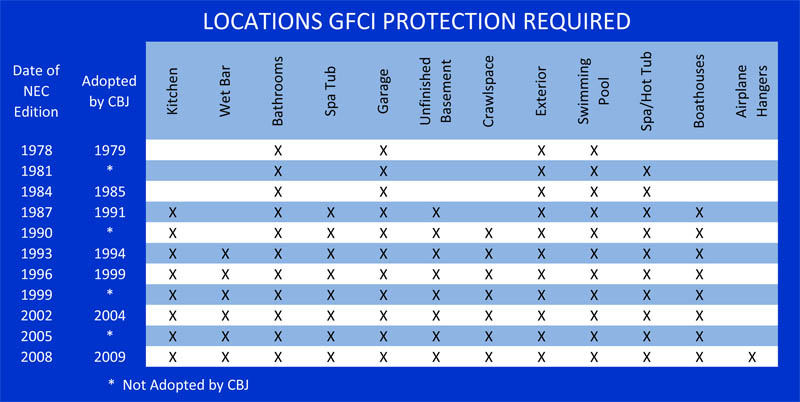
GFCI and AFCI Explained
As new technology brings us new tools to make our lives easier, it also provides new devices to keep up safer in our homes. GFCI and AFCI outlets are little technological wonders. They are outlets that contain some extra, specialized and micro-miniaturized electrical circuits that can detect the specific, characteristic waveforms of electrical current that are present when certain dangerous situations occur. When the detect such conditions, they automatically shut down the electricity, providing an extra layer of safety and, possibly saving a life in the process. Please read the explanations below and check out the web page links that re highlighted.
GFCI Electrical Outlets - A GFCI outlet (GFCI stands for Ground Fault Circuit Interrupt) is a special electrical outlet that provides much greater protection from electrical shock than a standard electrical outlet does. Think of a GFCI outlet as a small, ultra sensitive circuit breaker that is built right into the outlet. Here's how it works.
When the amount of electrical current coming out of the 'hot' prong of the outlet (the smaller slot) is just 5/1000 of an amp different from the amount of electrical current coming back into the outlet on the 'neutral' prong (the larger one), the outlet will 'trip', i.e. shut down the outlet. In such a case, the GFCI outlet senses that it is putting out more electricity than it getting back. The only place that this missing electrical current can be going is to another source of ground, which is probably a person!
GFCI outlets are now required to be used anyplace in your house where there is a close proximity to the grounding of a human being. Such places are; kitchens, within 6' or water, sinks, dishwashers or disposers; bathrooms; unfinished basements; garages or outdoor outlets.
Is GFCI protection required for your home?
Your home may have been built with out GFCI protection. The City and Borough of Juneau first adopted the National Electric Code in 1979. If your house was built before 1979, code may not have required GFCI protection in all areas. But safety does! Going beyond the minimum safety requirements of local building codes to the higher standards of safety is part of what a professional home inspector does.
The minimum codes in place since 1979 are shown in this table

AFCI Electrical Outlets - An AFCI outlet is much like a GFCI outlet, bit protects against an entirely different potential danger. Sometimes, certain types of electrical appliances will be used to convert electricity into heat. Sometimes, these devices will also cause heating where the device plugs into the wall. This is called arcing. You sometimes see it when you quickly unplug a heating appliance, like a clothing iron, from an outlet while the switched on.
An AFCI outlet will detect any 'arcing' (i.e. sparks, where electricity is being converted to heat when you don't want it to) and shut down the outlet before any damage can be done.
ACFI outlets are now required in all sleeping areas, such as bedrooms or dens with fold out couches. These are areas where fires could start and catch people who are sleeping or otherwise unable to get out quickly, in case of a fire.
Please Note: Like GFCI outlets, older homes are not usually required by local building codes, but they are required by the much higher safety standards used by professional home inspectors.